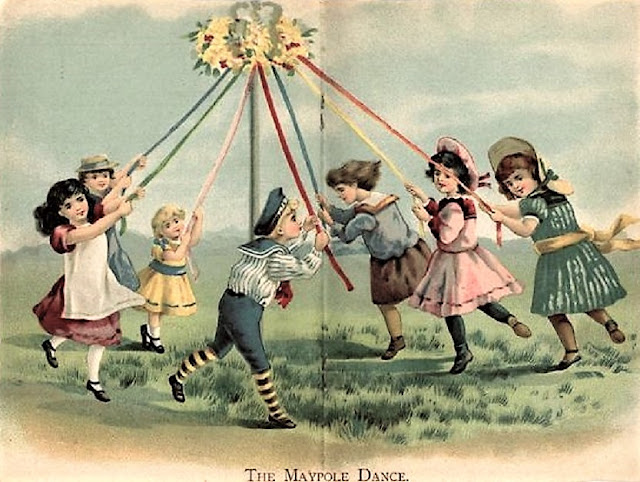Meeting at a Liberty Tree
Why ‘Liberty Trees’ Became an Obsession After the Revolutionary War
At first, colonists used trees as meeting places to protest & plan resistance, then their significance grrew /
History tells us that when the Marquis de Lafayette visited the United States in 1824 & 1825, there was a can’t-miss destination on his itinerary. Now gnarled with age, the beloved general would receive a hero’s welcome as he crisscrossed the United States he had helped create. It was a farewell tour & a nod to a country that was now 50 years old. And the Marquis knew exactly what he wanted to see in Boston—a tree stump.
It wasn’t just any tree: It was a potent symbol of freedom that had special significance for those who participated in the rebellion. Boston’s Liberty Tree was just one of dozens, perhaps even hundreds, all over the 13 colonies. And they weren’t just famous in the new United States: The symbolic plants were known worldwide.
Even as a stump, the place where Boston’s Liberty Tree had once stood held special significance. “The world should never forget the spot where once stood the Liberty Tree so famous in your annals,” said Lafayette. Three cheers rang out as his carriage passed the place where the tree had once stood.
How the Sons of Liberty Helped Ignite the Revolution
In the 18th century, people often used natural landmarks like trees as meeting places, & trees were important points of reference. They also held symbolic power: As historian Alfred R. Young notes, English lore contains plenty of stories of trees tied to political events, & “trees in general were much venerated by colonists.”
It makes sense, then, that trees took on special importance when those colonists started to rebel. In 1765, a group of nine patriots who called themselves the Loyal Nine—a precursor of the Sons of Liberty—began to plan resistance to the Stamp Act.
The hated law, which was administered by a public official named Andrew Oliver, required colonists to pay taxes on everything from newspapers to playing cards. It was the first tax ever levied on the colonies, & it felt like an affront to businessmen like the Loyal Nine. In secret, they planned a series of protests that would become the first public acts of resistance to the English Crown.
Angry Colonists Meeting Around An Elm Tree in Boston, Massachusetts
They chose an old elm tree at the corner of what is now Essex & Washington Streets as the site of their first protest. On August 14, 1765, they hung an effigy of Oliver on the tree along with other symbols of the Stamp Act. As a mob grew, they beheaded & burned the symbol before heading to Oliver’s house. A few weeks later, a copper plate appeared on the tree, declaring it the “Tree of Liberty.”
Angry colonists now had a voice—& a symbol. They began to meet regularly beneath the tree, & its fame quickly spread to other colonies. Soon, cities as far as Rhode Island & Maryland had named their own liberty trees.
The trees had cousins: Liberty poles. They were less decorative than trees, but they had a similar function. Erected all over the rebellious colonies, the mast-like poles were places to post broadsides about the Crown’s tyranny & to gather for protests, speeches & political meetings.
“A Liberty Pole had no roots,” writes historian David Hackett Fischer. “It could be constructed anywhere on the spur of the moment & in many different sizes.” Some were even taller than colonial cities’ largest buildings, Fischer writes, & they were often the sites of riots & rivalries over who could tear down the mast & who could erect another.
As symbols of the rebellion, plenty was at stake when it came to these trees & poles. The colonial government & the British military knew it, & used it to their advantage. In 1775, for example, British soldiers punished Thomas Ditson, a farmer who had tried to purchase a musket from a soldier, by stripping him down, tarring & feathering him, & forcing him to parade past the Liberty Tree wearing a sign that read, in part, “American Liberty (or Democracy) exemplified in a Villain.”
By that time, liberty trees were so well known that they had become landmarks in & of themselves. But later in 1775, the beloved Boston elm tree, which was nearly 130 years old, paid the price for its fame when a group of loyalists & British soldiers tore it down.
The loyalists “made a furious attack on it,” reported a local paper. “After a long spell of groaning, swearing, & foaming, with malice diabolical they cut down a tree because it bore the name of ‘Liberty.’” The tree provided 14 cords of wood that were used to heat buildings used by the army.
Defiant to the end, the colonists simply renamed the tree “Liberty Stump,” erected a pole there, & continued to revere it. Other liberty trees met with happier fates & lasted well into the 20th century; New York’s was only cut down in 1999, & a tree in Annapolis is being restored using grafting & the cultivation of new seedlings.
Even after the revolution, liberty trees remained a potent symbol of the power of rebellion & public protest. When revolution broke out in France in 1789, revolutionaries began to name & plant their own liberty trees, & the custom also sprang up in Italy & Germany.
What started as a simple meeting place had branched into a tradition as inspiring as it was famous.
See: History.com By Erin Blakemore June 13, 2023

%201861%20-%201907.jpg)








%2C%2B%2BSpring.jpg)
+May+Day+Scene.jpg)

+Raising+the+Maypole+(2).jpg)









.jpg)
.jpg)




.jpg)
%2BAllegory%2Bof%2Bthe%2BSeasons%2BSpring.jpg)















.jpg)
.jpg)

